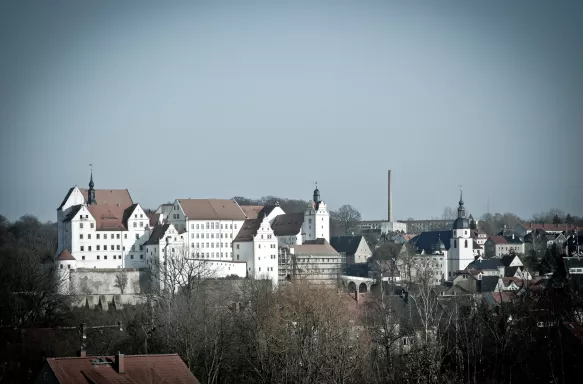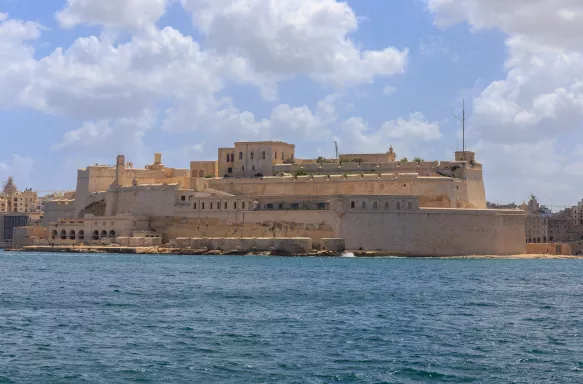WW2 Places to Visit in Europe

World War Two was by far the most deadly conflict in human history, taking the lives of between 35,000,000 and 60,000,000 people. The scars of this conflict can still be seen across the world. We’ve built memorials to commemorate the fallen and museums to remind us of the best and worst of which we are capable. And still, over 75 years later, these sights are a popular destination for travel and history enthusiasts looking to discover the stories of these sights first-hand.
If you’d like to follow in the footsteps of the Allied soldiers or witness the destructiveness of the Nazi regime first-hand, these are some of the most historic places to visit in Europe, including Germany, France, Poland, Malta and Jersey
Best Places In Europe To Visit For WW2 History
France
For those who want to learn more about the strain of the conflict on the people and the countries involved, France is a great place to start. A member of the Allied forces, it became one of the largest military powers to come under occupation during WW2. Today, there are many French battlefields and other sites relating to the conflict.
Normandy
An unmissable stop for history buffs is the Normandy landing beaches. Home to the largest seaborne invasion in history, Normandy is the perfect place to immerse yourself in the history of WW2. Cast your eyes across the sand to the water and remember the 156,000 Allied troops that came ashore on the Normandy beaches, not knowing if they’d survive the fight.
Now the Normandy D Day beaches are home to WWII memorials and museums, like Utah Beach D-Day Museum. You can learn more about the armies and strategies that helped the Allied forces win and hear first-hand accounts of the battle. Nearby, you can cross Pegasus Bridge, made famous by the film The Longest Day (1962), and stop at the museum to learn about the role the successful capture of this bridge had in preventing a German counter-attack during the weeks that followed the Normandy Invasion. Or pay your respects at the Canadian War Cemetery at Beny-sur-Mer the permanent resting place of 1 French, 4 British and 2044 Canadian soldiers.
You can visit some of these historic sites on our Paris, Normandy and the Historic Treasures of the Seine river cruise.

Paris
Whilst Paris might not be renowned for its connection to WW2, there are a few lesser-known sites to add to your list.
During the occupation of France, many of the city’s buildings were repurposed as German wartime buildings. You can visit sites, like 84 Avenue Foch, which notoriously became the main headquarters for the Sicherheitsdienst, the counter-intelligence branch of the Gestapo. The Hotel De Ville has a wealth of history to uncover including being the headquarters for the National Council of resistance during the liberation of Paris. And after the liberation of Paris, General Charles de Gaulle re-entered the city under the Arc de Triomphe, renewing the site as a symbol of France’s resistance to tyranny.
Visit the Arc de Triomphe and many other sights on our river cruise of The Seine, Paris and Normandy.

Dunkirk
The site of a historic rescue, Operation Dynamo rescued around 338,000 soldiers from the beaches of Dunkirk over nine days, aided by an estimated 850 privately owned Little Ships. Today, the Dunkirk War Museum sits in the spot which became the headquarters for French and Allied forces during the Battle of Dunkirk and evacuation. By the beaches, you can visit the Operation Dynamo memorial made from the cobblestones of the original harbour to commemorate the courage of the soldiers who stayed behind to hold off the German advance long enough for most to be evacuated. And, in the town itself, the sobering War Memorial is dedicated to those who died there.

Germany
As the leader of the Axis power during the Second World War, there are many towns and cities which offer insight into this dark time in world history.
Berlin
The site of one of the last battles of WW2, Berlin has much to offer history enthusiasts. The fire of the Reichstag in 1933 paved the way for the Nazi dictatorship by suspending constitutional guarantees. Since the war, the Reichstag has been restored as the seat of the German Parliament and parts open to the public. In the centre of the city is the ‘Memorial to the Murdered Jews of Europe’, open day and night, visitors are encouraged to wander through the maze of concrete slabs as they reflect on the past. A little out of the city centre, in Treptower Park, is The Soviet War Memorial built to commemorate the Soviet soldiers who fell fighting to capture Berlin. There are also many other smaller sites of interest, including Vorbunker / Fuhrerbunker, the underground bunker Adolf Hitler took shelter and eventually committed suicide.
You can visit Berlin on our tour of Berlin, Dresden, Meissen and Colditz.

Nuremberg
This stunning Bavarian city has a dark past. Known for its association with the Second World War, Nuremberg was the site of many pre-war Nazi rallies and, later, the war crimes trials. Visit the Nazi Rally Grounds and setting for the infamous propaganda film Triumph of the Will (1935). The grand complex is now part of a preservation project, and a specially constructed exhibit is open in its place while work continues. You can also visit the Palace of Justice, which housed the Nuremberg Trials from 1945 to 1946. While courtroom 600 remains a working courtroom, on the top floor is an intriguing museum providing insights into the defendants and their crimes.

Colditz
The supposedly escape-proof Colditz castle was the site of a German prisoner-of-war camp during the war. However, the dramatic, ingenious escapes of prisoners are so well-renowned they have been the subject of books and films like The Colditz Story (1955). A visit to the building and the related exhibition offers intriguing insights into the lives of both inmates and guards. On display are escape tunnels, a homemade radio, false uniforms and other escape equipment, all ingeniously crafted from whatever materials were to hand. Some of the most moving exhibits are postcards sent by prisoners to their children, whom they had not seen for many years.
Colditz Castle is a stop on our tour of Berlin, Dresden, Meissen and Colditz.

Poland
The invasion of Poland initiated World War Two as German forces broke through Polish defenses along the border and advanced on the Polish capital, Warsaw.
Auschwitz
The harrowing sights at Auschwitz allow visitors to reflect on the sheer scale of the atrocities. The concentration camp was left virtually as it was when it was liberated in 1945. It is now a UNESCO-protected site, a museum and a monument educating visitors on the tragic history and treatment of the Jewish people and other prisoners of the Holocaust. During guided tours, you can explore the cabins and crematoriums in Birkenau, the watchtowers, railway ramps and gruesome gas chambers.
You can visit Auschwitz on our tour of Krakow.

Malta
Malta was an important strategic base for the Allied forces, allowing them to disrupt Axis supply lines to Libya and supply British troops in Egypt. Malta was the victim of the heaviest, most sustained bombing attack in World War Two; over 154 days and nights, 6700 tons of bomb fell on the island and the entire population of Malta were awarded the George Cross.
Valletta
The 16th-century city of Valletta seems an unlikely place to find the echoes of World War Two. However, the National War Museum in Fort St Elmo boasts a treasure trove of artefacts recounting the events that led to the two world wars, how they developed and their consequences on the island nation. It’s home to a replica of the George Cross awarded to the Maltese people for their bravery. Visit Valletta on our Malta Uncovered tour.

Jersey
During World War Two, Jersey was occupied by German forces. While they began with a relatively moderate approach, conditions for the locals got harder, with mass deportation and forced labour.
The War Tunnels
The Jersey War Tunnels were dug using this enforced labour, designed to allow German infantry to withstand Allied air raids and bombardments in case of invasion. Now, they contain an underground collection of thought-provoking exhibits that tell the fascinating story of occupation and resistance through the eyes of its inhabitants.

Outside Of Europe
Outside of Europe there are many other sites connected with World War Two, including the site of the first atomic bomb, Hiroshima. The Hiroshima Peace Memorial is that’s left near the hypocentre of the first atomic bomb, and it remains in the same condition as just after the explosion. This silent, skeletal structure is a powerful reminder of the destruction humankind can invent and a symbol of hope for permanent world peace. The accompanying museum displays harrowing exhibits of artefacts that remained after the bombing, including the tricycle of a three-year-old killed by the blast, a CGI recreation of the moment of explosion and photos of those injured by the blast, bringing to life the human cost of the conflict. You can visit Hiroshima and the site of the Genbaku on our Japan Tour.

Our team of experts hand-pick every stop and every visit to ensure you see the best of every destination. Our European Tours feature a fascinating mix of history, culture, architecture, gastronomy and art, including some of the most poignant sites of World War Two. Book your European holiday now.





















